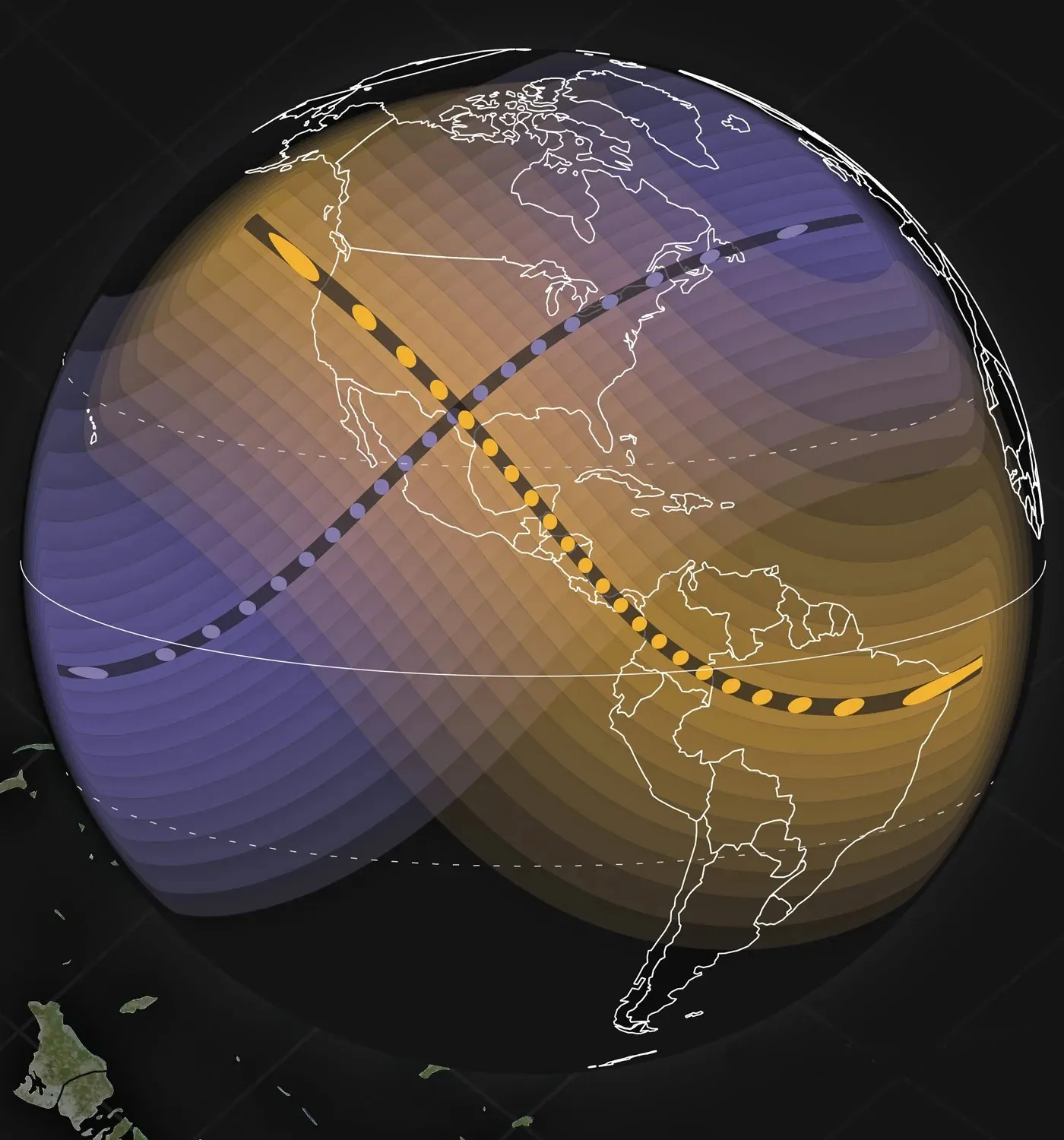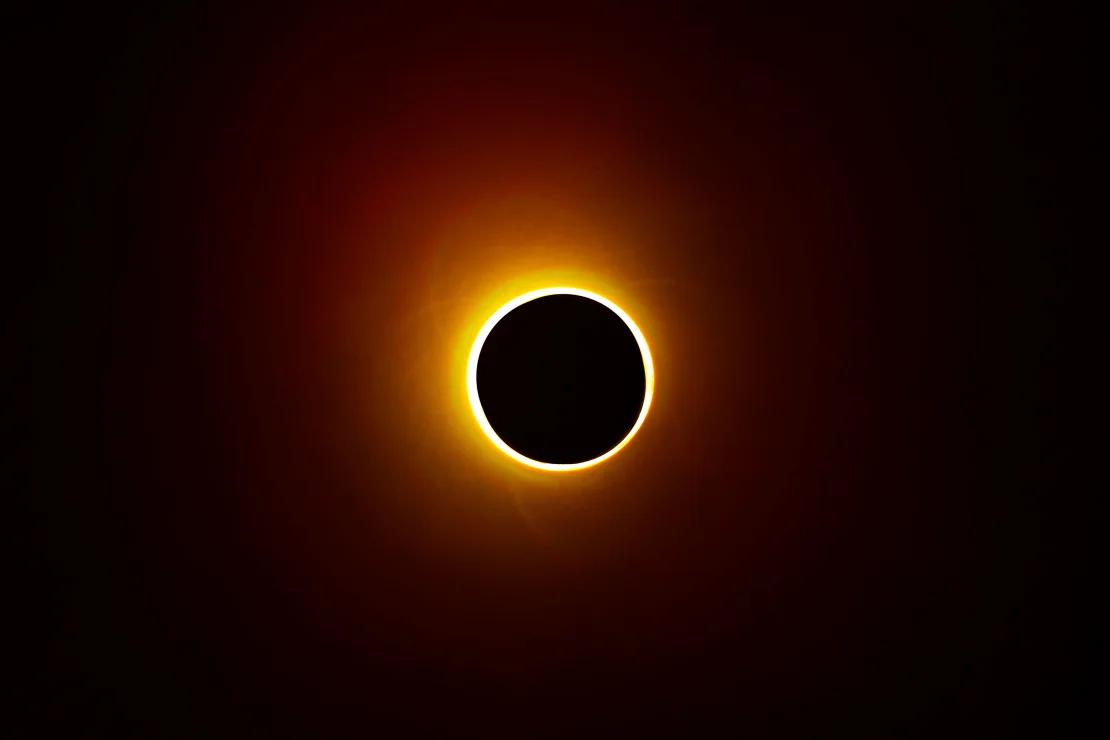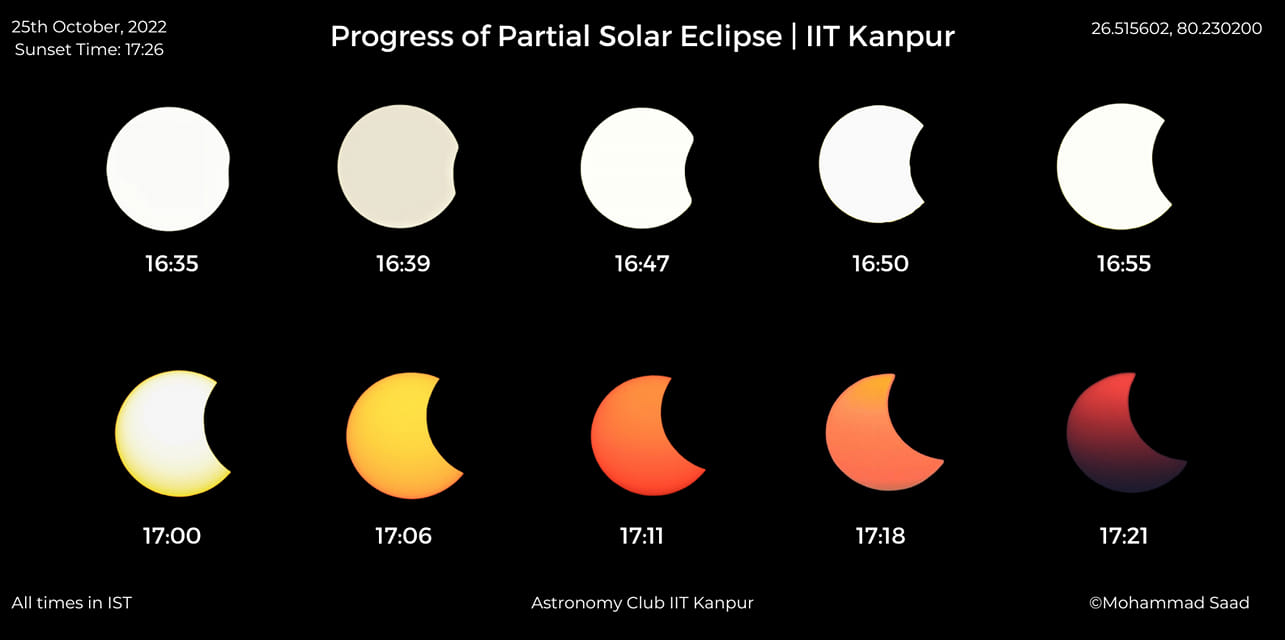Solar Eclipses
If you’ve completed your 10-th class, you must be knowing that solar eclipses occur when the Moon comes in between the Sun and the Earth, in a straight line. The Moon casts a shadow on the Earth, and the shadow falls on a small part of the Earth. This is called a solar eclipse. A visual representation of this is shown below (credits: TimeAndDate):

While observing a solar eclipse, NEVER look at it directly! If you’re doing naked eye observation, make sure you have a protective solar glass over your eyes. If you’re using a telescope, make sure you have a solar filter in place, even for normal solar observations.
A solar eclipse occurs roughly every six months, on a new Moon. This is because the plane of revolution of the Moon around Earth is tilted at roughly 5 degrees from the plane of revolution of the Earth around the Sun.
Had the Moon been in a perfectly circular orbit and in the same orbital plane as Earth, there would be a total solar eclipse every month on a new Moon.
Total Solar Eclipse
A total solar eclipse occurs on average every 18 months, when the Moon completely obscures the bright light of the Sun, allowing the fainter corona of the sun to be visible. Totality occurs for a very short amount of time and on a narrow track on the Earth. This narrow track is called the path of totality.
The following illustration by NASA shows in great detail the full path of the 2023 solar eclipses. The weird X-forming lines are the paths of totality for the two eclipses.

Annular Solar Eclipse
An annular solar eclipse occurs once every one or two years, when the Sun, Moon and Earth are exactly in line, but the apparent size of the Moon is smaller than of the Sun due to it being farther away from the Earth than it usually is. Hence, the Sun appears as a very bright ring, or annulus, surrounding the dark disk of the Moon. It happens when the Moon is near apogee, and the Moon’s antumbra falls on Earth.
The following image captures the ring of fire perfectly, which happens during an annular solar eclipse (credits: CNN).

Partial Solar Eclipse
A partial eclipse occurs about twice a year, when the Sun and Moon are not exactly in line with the Earth resulting in the Moon only partially obscuring the Sun. Hence, only the penumbra part of the Moon;s shadow falls on Earth. These are virtually unnoticable in terms of the Sun’s brightness.
The progress partial solar eclipse of October ‘22 was captured in great detail from near IIT Kanpur by Saad. One can excellently see the moon obscuring the Sun over a span of an hour:

Hybrid Solar Eclipse
A hybrid solar sclipse shifts between a total solar eclipse and annular solar eclipse. At certain points on the surface of Earth, it appears as a total eclipse, whereas at other points, it appears as annular. These are comparatively rare.